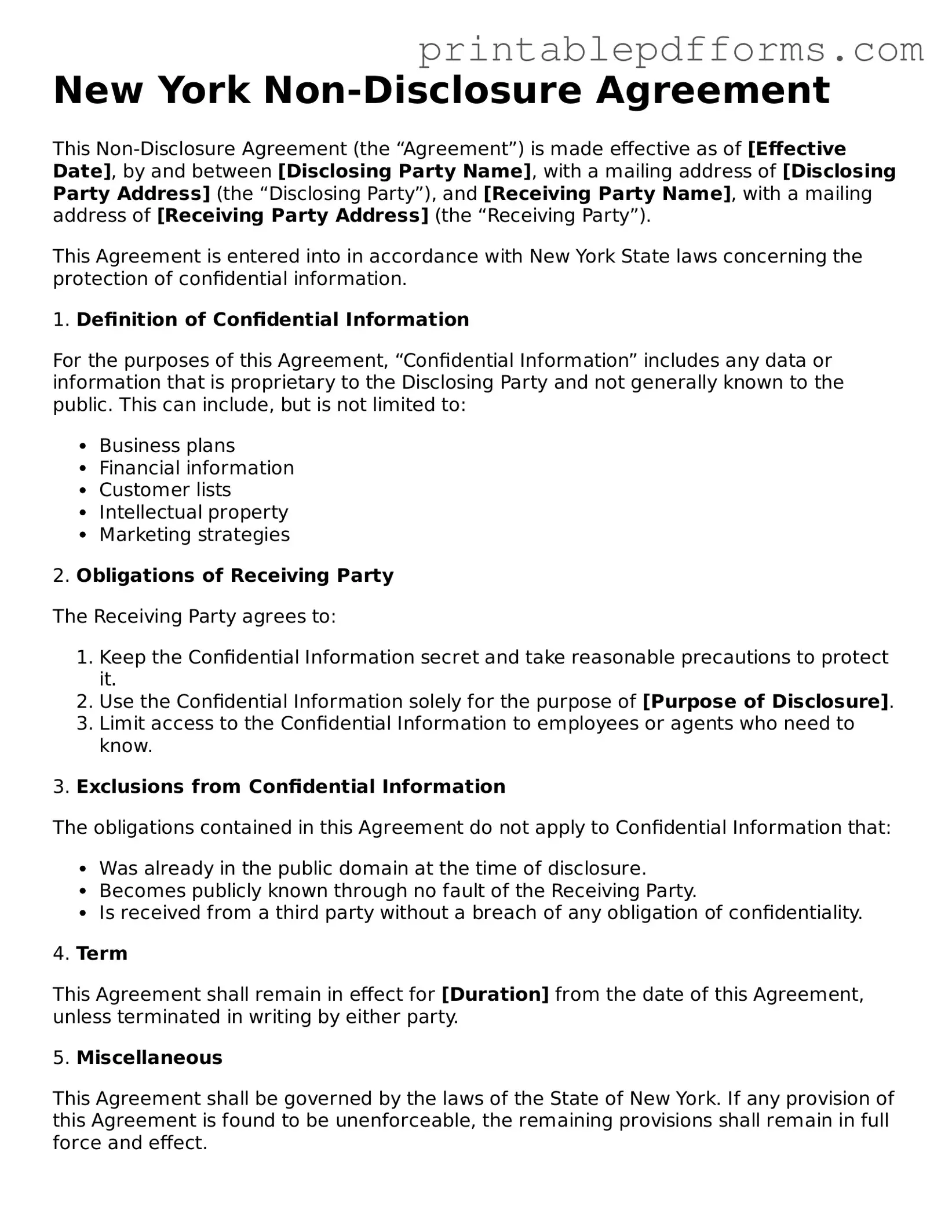New York Non-Disclosure Agreement
This Non-Disclosure Agreement (the “Agreement”) is made effective as of [Effective Date], by and between [Disclosing Party Name], with a mailing address of [Disclosing Party Address] (the “Disclosing Party”), and [Receiving Party Name], with a mailing address of [Receiving Party Address] (the “Receiving Party”).
This Agreement is entered into in accordance with New York State laws concerning the protection of confidential information.
1. Definition of Confidential Information
For the purposes of this Agreement, “Confidential Information” includes any data or information that is proprietary to the Disclosing Party and not generally known to the public. This can include, but is not limited to:
- Business plans
- Financial information
- Customer lists
- Intellectual property
- Marketing strategies
2. Obligations of Receiving Party
The Receiving Party agrees to:
- Keep the Confidential Information secret and take reasonable precautions to protect it.
- Use the Confidential Information solely for the purpose of [Purpose of Disclosure].
- Limit access to the Confidential Information to employees or agents who need to know.
3. Exclusions from Confidential Information
The obligations contained in this Agreement do not apply to Confidential Information that:
- Was already in the public domain at the time of disclosure.
- Becomes publicly known through no fault of the Receiving Party.
- Is received from a third party without a breach of any obligation of confidentiality.
4. Term
This Agreement shall remain in effect for [Duration] from the date of this Agreement, unless terminated in writing by either party.
5. Miscellaneous
This Agreement shall be governed by the laws of the State of New York. If any provision of this Agreement is found to be unenforceable, the remaining provisions shall remain in full force and effect.
IN WITNESS WHEREOF, the parties have executed this Non-Disclosure Agreement as of the date first above written.
Disclosing Party: _________________________________
Authorized Signature: ___________________________
Date: _________________________________________
Receiving Party: _________________________________
Authorized Signature: ___________________________
Date: _________________________________________
